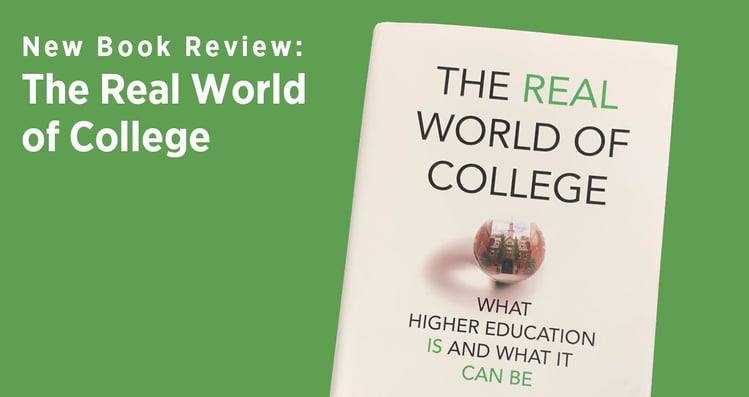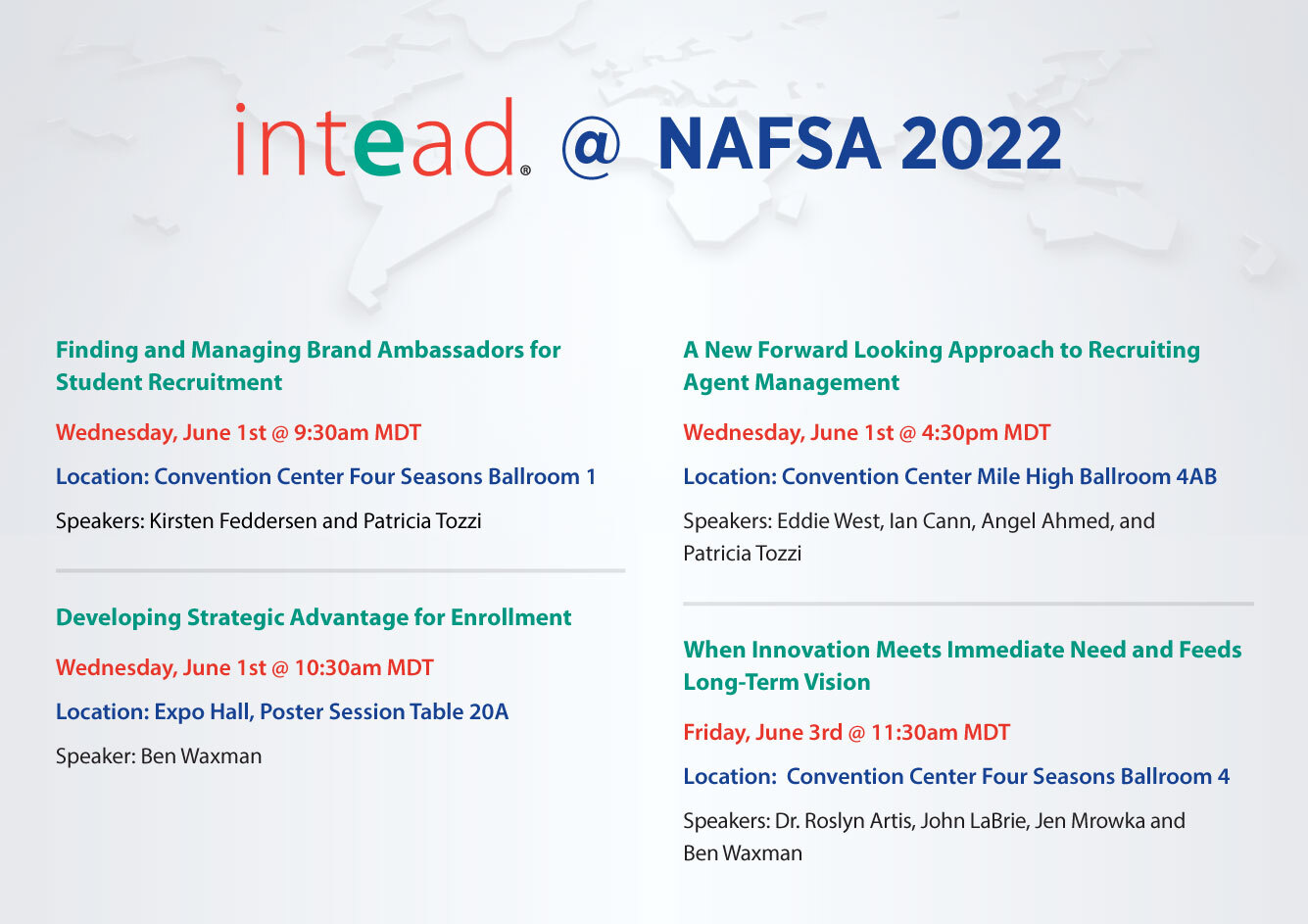
Like you, we spend a lot of time getting into the mindset of students. We need to understand their behavior, their decision making process, by region, by study interest, by age and other demographics.
So, when we read that education luminaries Wendy Fischman and Howard Gardner released a book based on more than 2,000 interviews with higher ed students, alumni, faculty, administrators, parents, trustees, and more, we couldn’t help ourselves. We had to get it.
The book, The Real World of College, What Higher Education Is and What It Can Be, is an analysis of interviews conducted at ten US institutions representative of a range of schools, from the highly selective to the lesser so. For us, the results reveal new insights and confirm long-held beliefs. It’s worth the read for anyone who cares about the student experience, student outcomes, and the long-term viability of our industry.
Reading it through the lens of student recruitment, of course, we’ve gathered key takeaways that can inform the work you’re doing now (recruitment marketing) as well as the longer-term stuff (onboarding, student services, career services, and alumni relations).
Always insight and action-oriented: Below we offer our top 5 takeaways from this great read and importantly, your clear action item for each insight.
Let’s meet in person!
If you’re at NAFSA next week, be in touch. We will absolutely do our best to fit in another meeting while in Denver. You’ll see Ben, Patricia, and Iliana racing from our presentations to a bunch of IEM sessions and all those networking events.
Our 2022 can’t miss sessions:

Read on for our top 5 book review takeaways for your admissions team…
Our 5 Key Findings for Student Recruitment from The Real World of College:
Takeaway 1: Nearly half of the students see college as transactional
Based on the research, Fischman and Gardner categorized the student mindset into 4 mental models: transactional, exploratory, transformational, and inertial.
- A full 45% fall into the transactional category, meaning they mostly view college as a springboard for future-oriented ambitions. Generally, low- and medium-selectivity schools have the most students with transactional mindsets (57% and 54% respectively) vs high-selectivity schools (26%), which have the most students with exploratory mindsets (51%).
- One-third fall within the exploratory model, which are those students who want to learn about diverse fields of study, try out new activities, try on new ideas, and connect with new people.
- 16% showed a transformational mindset with goals to reflect, question, and change.
- Fortunately, only 3% were inertial or without much aspiration or reason for being there.
We find it interesting that the majority view higher education as simply a means to an end. That said, at every school studied, the number of students possessing a transformational mindset increased after the first year and as they progressed toward graduation. No doubt this evolution has everything to do with the student experience coupled with natural human maturation.
To do: Persona development is so important. Dive deep into understanding the true mission of your institution and pinpoint the personas of your successful student population. Use this knowledge to inform your recruitment initiatives that find “best fit” students for your institution. This means if your students lean toward transactional thinking, you’ll want to message around student outcomes. Whereas for exploratory minded prospects, you’ll focus more on your breadth of academic and social programs. This is the kind of work that results in recruitment campaigns that resonate. (Need help getting started? This is so in our wheelhouse. Be in touch.)
Of course, the mental model goes much deeper than it seems. Much deeper. Hence, insight #2…
Takeaway 2: Your institution’s culture greatly impacts how students come to understand the college experience
Sounds obvious enough, but is it?
We found it interesting that the authors say there is no correlation between the kind of high school students attending and the mental model they fell into: “This factor strengthens our conviction that institutional culture – from first exposure during the admissions process to the final strides across the platform at graduation – can have a significant impact on the way in which individuals understand the college experience.” Need we say more? It is you who shapes the kind of student who chooses your institution. What you deliver to your students matters!
To do: The college experience begins with the very first point of contact. Your admissions team must align everything they do to your institution’s mission. Your messaging. Your images. Your tactics themselves must map back to who you are. (You do have a clear picture of your institution’s central mission, right?). And following recruitment, it's all about student experience.
For more perspective, have a look at our recent post on how a student-first approach can permeate your student recruitment initiatives and your campus environment.
Takeaway 3: Onboarding should be deliberate, thorough, and reflective of your mission
Your institution’s mission does not lessen upon matriculation. It is the authors’ beliefs, ours as well, that “each and every student – indeed each and every constituent – should be informed and reminded of the central message.” In other words, it’s not the student’s job to figure out your mission. That’s on you. And it’s key to shaping the student experience and outcomes.
To do: While your university’s core mission should have been well intertwined with your recruiting efforts, double down during onboarding. Who you are should be present in the application form, throughout welcome week, in student services, in the curriculum…you get the message.
Takeaway 4: Projectitus is a thing. And it needs to be addressed
An overload of projects, initiatives, programs, and even departments is never the goal. These efforts tend to be well-intended, but they often add up and get kind of clunky over time. Maybe a lot clunky over time. Sound familiar? The book defines projectitus (great term, by the way) as the manifestation of mission sprawl and misalignment. It is perilous to students, the institution, and the sector of higher education. They suggest that when it comes to projects, less is more. We fully agree.
So many parents and students we’ve talked to feel lost in all the options they encounter at their chosen university. Degrees, certificates, stackable credentials, you know what we are talking about. All your students and their families really want, they tell us, is a clear way forward. And yes, they like options, but the options need to be easy to follow, as in: "Based on my goals, the path I should follow is clearly...?"
To do: We think the authors get it right by suggesting a few actions. First, only create programs that relate to the mission of your institution. Secondly, prune programs that are not directly tied to your institution’s goals (which are all student-first focused). Yes, easier said than done. We know, everyone on campus wants their specialty elevated to premier status. Keep the student in mind the next time you review that faculty proposal. Keep student experience front and center. Stay strong.
Takeaway 5: Mental health is a central issue across campuses
This was an overwhelming finding that we simply could not ignore. According to Fischman and Gardner, across all types of campuses, participants view mental health as the biggest problem facing students. One of every five students said they struggle with their own mental health issues and 38% said the issue is prevalent on campus.
Notably, these interviews were conducted before the pandemic. Things have not gotten any better and the media has been reporting on this more and more frequently. Awareness raising and making mental health a consistent topic of conversation is a good thing. A really good thing.
To do: We know you’re already talking a lot about mental health issues on campus. It’s so important. From strictly a recruitment point of view, ensure prospective students and their families know about the mental health resources and other supports available to them through your institution. Just like any other health care services, let them know you have the capacity to support throughout the challenging growth that will happen during their university years. (Be sure your team can deliver on those promises before you make them.)
If interested in learning more, get a copy of The Real World of College. Or, to think through how these findings could impact your student enrollment work, be in touch. We’d be happy to help.



